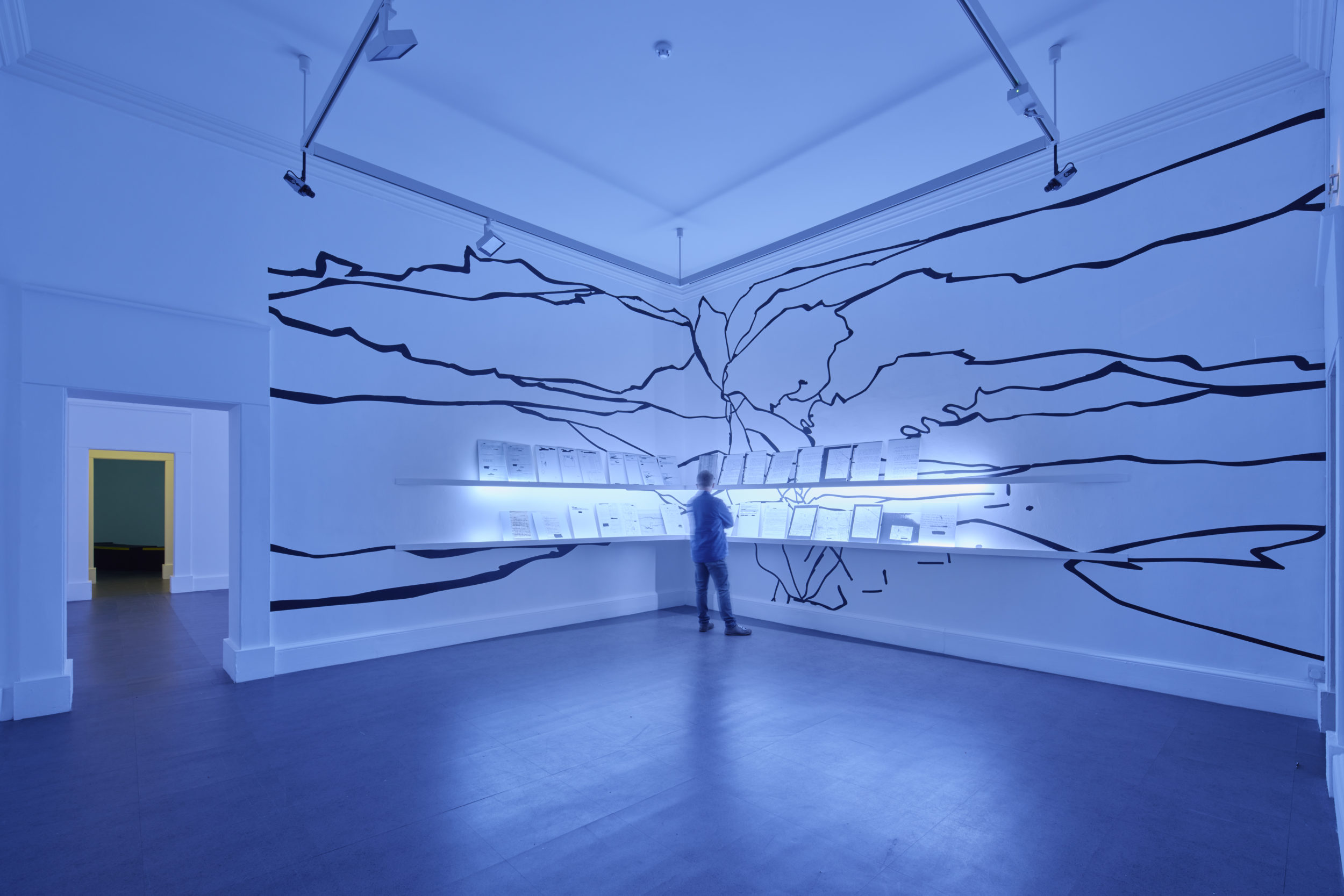The Otolith Group is an artist collective founded in London in 2002 by Anjalika Sagar and Kodwo Eshun, which focuses on the planet and human experience, explored through filmatic practices. Their first large-scale museum exhibition, Xenogenesis, developed in Eindhoven and currently on a world tour, was on show at the Irish Museum of Modern Art (IMMA) from 7 July 2022–12 February 2023.
I attended the exhibition on its closing day and from the minute I walked in, its atmosphere drew me in. Indeed, there is a looming presence in this show; the viewer senses a pervading force. Although the theme and premise are not obvious at first sight, my overall impression is that the exhibition explores the complexities of technology as it relates to human life and its omnipresent grip over our lives.
“It took a little while for my senses to adjust to this first work, Anathema (2011) — a 37-minute long HD video compilation of images, patterns, and video samples that aims to exemplify the concept of anthropic inversion.”
The digital footprints left on earth by humankind are primarily approached through the medium of videography. Upon entering the exhibition — a dark room with blue undertones — I was surrounded by ethereal and slightly discordant sounds on the speaker, echoing throughout the room. It took a little while for my senses to adjust to this first work, Anathema (2011) — a 37-minute long HD video compilation of images, patterns, and video samples that aims to exemplify the concept of anthropic inversion. A 37-minute video installation may seem too long and tedious (my initial thought). However, on reclining back on the black dentist-like chairs, the film had myself and my fellow viewers’ undivided attention. Its ethereal and sonic images made us fall into a sort of trance; its topic was the material substrate of liquid crystal technology as an entity that possesses our consumerist society.
With a subject matter that resembled science-fiction, the works on show almost made it seem like technology was invading the earth. I was particularly interested in a shot from Anathema of a reoccurring giant black square, like a screen is out of place in the middle of New York City, similar to films where an alien spaceship appears on Earth much to the astonishment of humankind. It is an enigma to humanity; this could possibly be a consequence of our digital footprint and the impact it has on our world. In the shot, different shots of hands are constantly reaching out to grasp something inexplicable, connecting us to our everyday technologies and the effects they have on us. The enigmatic black square mobile phone or television screen is a recurring image in the show. It presides in a liminal space and is reminiscent of The Backrooms found footage; an uneasiness of an alien invasion interrupting human life. Xenogenesis demonstrates how technology can be compared to an invasive otherworldly species.
Moving into the second room, the next works are a continuation and adaptation of the first. They, too, are immersive and captivating. In the darkened room, my eyes were drawn to the floor, where a video of a constant stream of rippling patterns was shown, flowing across the screen — an almost magical dimension that looked cosmic and simultaneously technological and cerebral. What heightened the impact of this installation were the mirrors that were placed at an angle above it, reflecting the patterns above the viewer.
“By treating the technologies of ‘images, voices, sonic images, sounds, and performance’ (IMMA) as narratives, the artists seek to reimagine the contemporary global and technological crises and explore ways in which humans have shaped the planet and how we respond to new technologies.”
The Otolith Group’s concern to formulate a science fiction narrative of the present, using historical and contemporary images and sounds, is visible in these works. By treating the technologies of “images, voices, sonic images, sounds, and performance” (IMMA) as narratives, the artists of Xenogenesis seek to reimagine the contemporary global and technological crises and explore ways in which humans have shaped the planet and how we respond to new technologies.
Although I was initially overwhelmed by the exhibition, after spending a while immersed in the show the premise revealed itself to me, through a multitude of digital images in the first room and the powerful simplicity of the flowing patterns in the adjoining rooms. The concept behind the exhibition is impactful. It is undeniably relevant to our generation, with the rise of artificial intelligence, as we begin to realise and exploit the power of technology.






